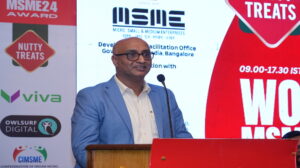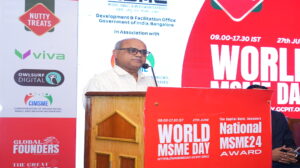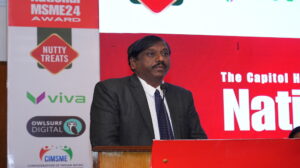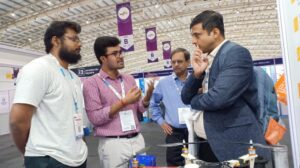Hong Kong launches national trade finance platform on blockchain

Hong Kong has launched its blockchain-based trade finance platform, aimed at digitising open account transactions and reducing fraud.
eTradeConnect was unveiled today at the Hong Kong Fintech Week. It was the centrepiece of the day’s flurry of activity, an indication of just how much interest there is in digitising the industry in one of the world’s top finance hubs.
The platform is now live: companies who are onboarded by the launch banks can transact on an open account basis with other parties, including buyers, sellers, shippers and insurers. But it is early days: banks are now workshopping with their clients to try to boost interest in the platform.
“The platform has just been recently launched and so it takes time for corporates to understand how it works and what are the benefits. Many of our clients, especially SMEs which are relatively more flexible and have less internal procedures, have expressed interest in getting on board. There are already some transactions completed on the platform, and we expect that the volume and the number of users will significantly increase over the next six months,” Biswajyoti Upadhyay, head of trade for Greater China and North Asia at Standard Chartered, tells GTR.
eTradeConnect was built and funded by 12 banks: Agricultural Bank of China, ANZ, Bank of China, Bank of Communications, Bank of East Asia, BNP Paribas, DBS, Hang Seng Bank, HSBC, Industrial and Commercial Bank of China, Shanghai Commercial Bank and Standard Chartered. It was built using Hyperledger technology by OneConnect, the fintech arm of Ping An Group, a Chinese insurance company. Deloitte is the consulting partner.
Eventually, the platform will be connected up with other blockchain networks around the world. At the launch ceremony, the chair of Hong Kong Trade Finance Company, a special vehicle set up by the Hong Kong Monetary Authority (HKMA), signed a memorandum of understanding with the European blockchain network we.trade which will see the pair link up to facilitate trade payments between the two jurisdictions.
It is also planned to hook up eTradeConnect with the Global Trade Connectivity Platform, another blockchain-based solution which is being developed by HKMA in conjunction with the Monetary Authority of Singapore (MAS).
Nelson Chow, chief fintech officer at HKMA, says that talks are ongoing with authorities in Mainland China with a view to integrating eTradeConnect with blockchain platforms there.
Recently, the People’s Bank of China (PBOC) tested a blockchain-based trade finance platform in the Guangdong region, over the border with Hong Kong. Chow said that while there was no announcement forthcoming at this stage on integration with the Bay Area Trade Finance Blockchain Project, there may be news in the near future.
At today’s launch, member banks were at pains to impress the importance of connectivity, saying that all involved should be trying to onboard other players in the trade cycle, from trading companies to logistics and shipping providers.
Each bank was invited on stage to “plant a seed” in a “symbolic dandelion” – a garish, neon affair – intended to represent the scattering effect the HKMA hopes this platform will have. Vivek Ramachandran, head of growth and innovation at HSBC, urged the industry to learn the lessons of the past.
“An example is the bank payment obligation (BPO), involving Swift. There was quite a few banks who bought into it, leading banks bought into it, it was led by an industry body, it ticked a lot of boxes, but there were no clients,” he said.
With HSBC also one of the sponsors of the R3 Corda-based Voltron project, designed to bring letters of credit onto blockchain, Ramachandran explained that with 85% of global trade taking place on an open account basis, it is keen to digitise both.
“We need to be realistic about how far we are from achieving scale,” he said, saying that in both cases, it will take at least two years to achieve critical mass.
Vivek Gupta, head of trade and supply chain for Greater China and North Asia at ANZ, said the bank was involved primarily because of the backing of HKMA, but also due to frustration at the failure of other projects in the industry to take off.
“The prime consideration was to see an ecosystem which has legs. We have a strong stakeholder in HKMA, which gets banks together and makes it move fast. Other cases were confined to proof of concept and not making progress beyond that,” he said, adding that the ability to connect with ANZ’s home markets in Australia and New Zealand in the future would be key.
The choice of technology, Hyperledger Fabric, is interesting, at a time when two key vendors are emerging in the trade finance industry, with R3’s Corda being the other. Asked whether the consortium has chosen the right technology, Thomas Tsui, head of corporate banking at the Bank of East Asia, cryptically replied: “It may not be the best choice, but it’s not the wrong choice.”
Brian Behlendorf, the executive director of Hyperledger, tells GTR that the technology was likely used because of the ecosystem.
“One thing that was compelling for them [HKMA] is that it’s not just IBM working on it, not just a small number of other companies, it’s truly become a multi-vendor ecosystem. You can go to the vendor directory on the Hyperledger website and find a list of 70 different companies, big ones like IBM, Accenture and Ernst and Young, small startups, and they’ll sell you consulting services, blockchain as a service. Oracle, Baidu, all of these tech companies are feeding improvements into Fabric, and that’s the benefit of an open source development environment,” he said in Hong Kong today.






